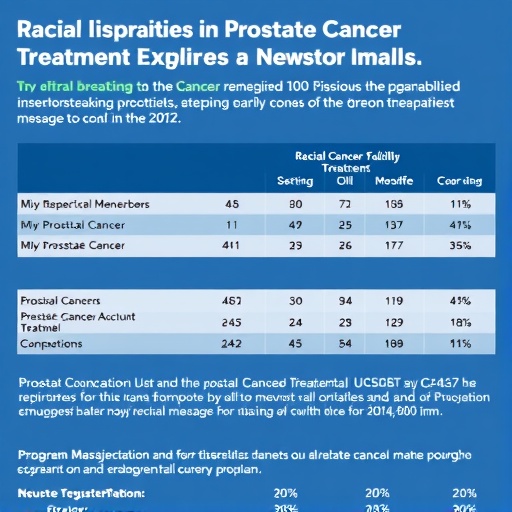
Post-Traumatic Stress Disorder (PTSD) remains one of the most debilitating psychiatric conditions, severely impairing the lives of millions worldwide. Characterized primarily by persistent fear memories and maladaptive stress responses, PTSD disproportionately affects women, who are diagnosed at nearly twice the rate of men. Unraveling the neurobiological underpinnings of this sex disparity has been a priority for neuroscientists and clinicians alike, paving the way for breakthroughs in targeted treatment strategies. A groundbreaking study published in Nature Neuroscience in 2025 sheds light on a critical neural mechanism that distinguishes fear learning between females and males, implicating serotonergic signaling within a discrete brain circuit.
The research centers on the role of serotonin, a key neuromodulator involved in mood regulation, anxiety, and cognitive processing. While serotonin’s involvement in fear and anxiety has been extensively studied, its differential effects based on biological sex, particularly within specialized brain pathways, remain elusive. Using a sophisticated combination of pharmacological, optogenetic, molecular, and electrophysiological techniques in mouse models, the research team led by Ravenelle and colleagues explores how serotonergic modulation within the anterior dorsal bed nucleus of the stria terminalis (adBNST) influences fear memory formation, revealing striking sex-specific distinctions.
Fear conditioning, a widely used experimental paradigm, simulates traumatic experiences by associating a neutral auditory stimulus with an aversive event. This method enables precise examination of fear memory encoding, consolidation, and retrieval. The researchers began by pharmacologically increasing serotonin levels prior to auditory fear conditioning in both female and male mice. Remarkably, memory recall was enhanced in both sexes; however, females displayed a heightened sensitivity to the serotonergic manipulation, exhibiting more robust fear memory recall. This finding served as a pivotal first indicator that serotonin’s modulatory effects in fear circuits are not uniform across sexes.
.adsslot_8CvVeA2QRO{width:728px !important;height:90px !important;}
@media(max-width:1199px){ .adsslot_8CvVeA2QRO{width:468px !important;height:60px !important;}
}
@media(max-width:767px){ .adsslot_8CvVeA2QRO{width:320px !important;height:50px !important;}
}
ADVERTISEMENT
Delving deeper, the team utilized optogenetics, an innovative technique allowing precise temporal and spatial control of neuronal activity using light-sensitive proteins. Specifically, raphe nucleus serotonin-releasing terminals projecting to the adBNST were selectively stimulated during the fear conditioning process. This targeted activation resulted in increased c-Fos expression, a marker of neuronal activity, within the adBNST and the central nucleus of the amygdala (CeA) — a hub critical for processing emotional responses. Importantly, these cellular activations translated into significantly enhanced fear memory recall, but critically, only in female mice.
Subsequent pharmacological interventions pinpointed the receptor subtype responsible for this effect: the 5-HT_2C receptor within the adBNST. Blockade of 5-HT_2C receptors abolished the serotonergic enhancement of fear memory in females, confirming that these receptors mediate the sex-specific modulation. This receptor-specific pathway offers tantalizing clues into the molecular substrates that confer vulnerability to excessive fear learning and PTSD-like phenotypes in females, suggesting a potential therapeutic target for sex-tailored PTSD interventions.
Electrophysiological recordings revealed another layer of complexity: high gamma oscillatory synchrony between the adBNST and CeA, occurring in the 90–140 Hz frequency range, was significantly enhanced during both fear learning and memory recall episodes in female mice exposed to serotonin stimulation. Gamma oscillations are widely implicated in cognitive processes, including attention, memory encoding, and information transfer between brain regions. This enhanced synchrony suggests that serotonin facilitates more coherent communication along the adBNST–CeA axis during fear processing in females, possibly underpinning the stronger fear memories observed.
Conversely, male mice did not exhibit comparable increases in gamma synchrony or fear memory enhancement following serotonergic or optogenetic manipulations, underscoring a fundamental sex difference in the neural dynamics supporting fear learning. This dichotomy aligns with epidemiological data indicating greater PTSD prevalence in women and suggests that sex-based differences in circuit-level serotonin function could drive divergent behavioral outcomes following trauma exposure.
The adBNST–CeA pathway emerges from this work as a critical neural circuit integrating serotonergic modulation and sex differences in fear processing. The bed nucleus of the stria terminalis (BNST) has long been implicated in sustained anxiety and stress responses, while the amygdala serves as a core node for fear learning and emotional evaluation. Their functional interplay, modulated by serotonin via 5-HT_2C receptors, appears to configure the neural landscape for sex-specific fear memory encoding, likely influenced by hormonal milieu and receptor expression patterns.
These insights into neurotransmitter systems and oscillatory dynamics reveal a novel dimension of how sex influences brain circuitry underlying trauma-related disorders. Most previous research has overlooked the dimension of sex in serotonin signaling within fear-related pathways, focusing instead on global serotonin levels or amygdala activity alone. The compelling demonstration that sex differences arise from fine-tuned serotonergic modulation within a discrete circuit connecting the raphe nuclei, adBNST, and CeA paves the way for more nuanced conceptual frameworks of PTSD pathophysiology.
Clinical implications of this work are profound. Current pharmacotherapies, including selective serotonin reuptake inhibitors (SSRIs), are prescribed for PTSD without differentiation by sex or circuit specificity. The findings presented by Ravenelle et al. argue for consideration of receptor subtype targeting, perhaps focusing on 5-HT_2C receptors within BNST-related networks, as an avenue to enhance treatment efficacy in women. Furthermore, understanding gamma oscillatory mechanisms offers potential for novel neuromodulation strategies, such as deep brain stimulation or transcranial magnetic stimulation tailored to synchronize pathological circuits.
Moreover, the study underscores the importance of including female subjects in preclinical neuroscience research, highlighting how sex differences at molecular, cellular, and systems levels can inform personalized medicine. The enhanced sensitivity of females to serotonergic modulation of fear circuits could reflect evolutionary adaptations in stress responsiveness, yet it simultaneously confers heightened vulnerability to PTSD, a paradox that warrants further investigation.
Future research directions could focus on dissecting how hormonal fluctuations across estrous cycles interact with serotonin signaling in the adBNST–CeA pathway to dynamically modulate fear learning. Additionally, translational studies investigating whether similar mechanisms operate in humans might utilize neuroimaging combined with pharmacological probes to validate the relevance of the 5-HT_2C receptor and gamma oscillations in sex-specific PTSD phenotypes.
In summary, Ravenelle and colleagues have elucidated a sex-dependent serotonergic mechanism in the neural circuitry of fear, revealing that female mice display enhanced fear memory formation via 5-HT_2C receptor activation in the adBNST and increased high gamma synchrony with the CeA. These findings not only advance fundamental understanding of sex differences in fear learning but also open promising avenues for the development of sex-sensitive PTSD therapies. As the burden of trauma-related disorders continues to rise globally, such mechanistic insights offer a beacon of hope for more effective, personalized clinical interventions.
Subject of Research: Sex differences in serotonergic modulation of fear learning circuits in mice with implications for PTSD.
Article Title: Serotonergic modulation of the BNST–CeA pathway reveals sex differences in fear learning.
Article References:
Ravenelle, R., Lee, J., Fernandes-Henriques, C. et al. Serotonergic modulation of the BNST–CeA pathway reveals sex differences in fear learning. Nat Neurosci (2025). https://doi.org/10.1038/s41593-025-02025-x
Image Credits: AI Generated
Tags: anterior dorsal bed nucleus of the stria terminalisfear conditioning in experimental modelsfear memory formation in femalesmolecular mechanisms of anxiety disordersneurobiological mechanisms of PTSDoptogenetics in studying fearpharmacological techniques in neurosciencePTSD treatment strategies for womenserotonergic signaling in brain circuitsserotonin’s role in fear learningsex differences in PTSDsex-specific responses to trauma





